.png?width=2240&name=Untitled%20design%20(1).png) Author Jacqueline Woodson said, “Diversity is about all of us AND about us having to figure out how to walk through this world together.” In our third Unit of Inquiry, as a part of the International Baccalaureate (IB) curriculum, we did just that in Grade 5. We explored the many different cultures that we are from and how they shape our identity.
Author Jacqueline Woodson said, “Diversity is about all of us AND about us having to figure out how to walk through this world together.” In our third Unit of Inquiry, as a part of the International Baccalaureate (IB) curriculum, we did just that in Grade 5. We explored the many different cultures that we are from and how they shape our identity.
We started with an iceberg, perhaps an unusual place to start a unit on culture and identity, but that is where we began. An iceberg is massive, but you can only see a small portion of it on the surface. Under the ocean is where you truly see the size and extent of an iceberg. Culture is much the same way. On the surface, we see the obvious parts. Dance, art, holidays, celebrations, clothing, music, all of these things are what we see on the topside of a “cultural iceberg”. It’s when we dig deeper that we begin to understand that there are so many different parts and elements of culture. It’s here where we wanted students to inquire. How do these deeper or hidden aspects of culture help to define who we are?
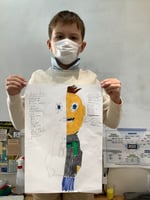
Students started their inquiry by looking at themselves first. Each student drew a self-portrait and then labeled traits that people would notice about them, surface-level traits. Next, students listed traits that aren’t obvious, the deeper things about them that may not be obvious on the surface. Students were encouraged to think about how the traits they listed might be related to their own personal cultures.
Next, students were asked to research and discover surface level and deeper level aspects of their own culture and 2-3 other cultures. This was accomplished through reading, interviews with staff at the school, and interviews with family members at home. This research culminated in an activity where students had the opportunity to compare and contrast cultures.
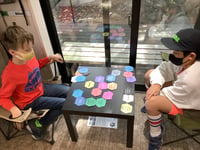
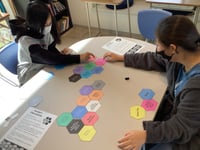
Hexagonal Thinking allows students to connect ideas using a series of hexagons. Each student was given eight hexagons and on each hexagon, they wrote down different aspects of a culture that they researched. They were then paired with a fellow classmate, and their goal was to try and connect as many hexagons as possible through discussion. With the aid of hexagonal thinking, students were able to see that while our cultures are very different, there is still much that connects us as well. A final activity incorporated geometry and the arts. Students were placed in a group and assigned a shape. Using only that shape, they were asked to create a design or artistic display.
Finally, students were allowed to create a pattern or artistic display using a variety of shapes. The discussions afterward focused on what students thought about having a homogenous design or a diverse one. The question we posed was, ‘What are the pros and cons of working with one shape or multiple shapes?” 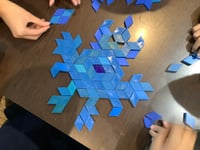 We then connected this thinking with culture and highlighted the benefits we find when
We then connected this thinking with culture and highlighted the benefits we find when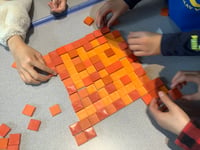 we are able to be surrounded by diverse cultures.
we are able to be surrounded by diverse cultures.
Through this unit, students were able to define culture, explore the deeper aspects of their culture, and build an appreciation for the benefits we find from living and learning in a multicultural setting.

.png?width=2240&name=Untitled%20design%20(1).png) Author Jacqueline Woodson said, “Diversity is about all of us AND about us having to figure out how to walk through this world together.” In our third Unit of Inquiry, as a part of the International Baccalaureate (IB) curriculum, we did just that in Grade 5. We explored the many different cultures that we are from and how they shape our identity.
Author Jacqueline Woodson said, “Diversity is about all of us AND about us having to figure out how to walk through this world together.” In our third Unit of Inquiry, as a part of the International Baccalaureate (IB) curriculum, we did just that in Grade 5. We explored the many different cultures that we are from and how they shape our identity.


 We then connected this thinking with culture and highlighted the benefits we find when
We then connected this thinking with culture and highlighted the benefits we find when we are able to be surrounded by diverse cultures.
we are able to be surrounded by diverse cultures.